Overview: Heredity | Science Class 10 PDF Download
This chapter on Heredity examines how traits and characteristics are passed down from one generation to the next. It looks at the ideas of genetic variation, inheritance, and the rules that regulate these processes as established by Gregor Mendel. The primary outcome of reproduction is still the production of individuals that share similar traits. The laws of heredity dictate how traits are consistently inherited. This chapter also explores how inherited traits can create diversity within a species and how heredity plays a role in evolution. Understanding these concepts is crucial for grasping the basic principles of genetics and the biological processes behind inheritance.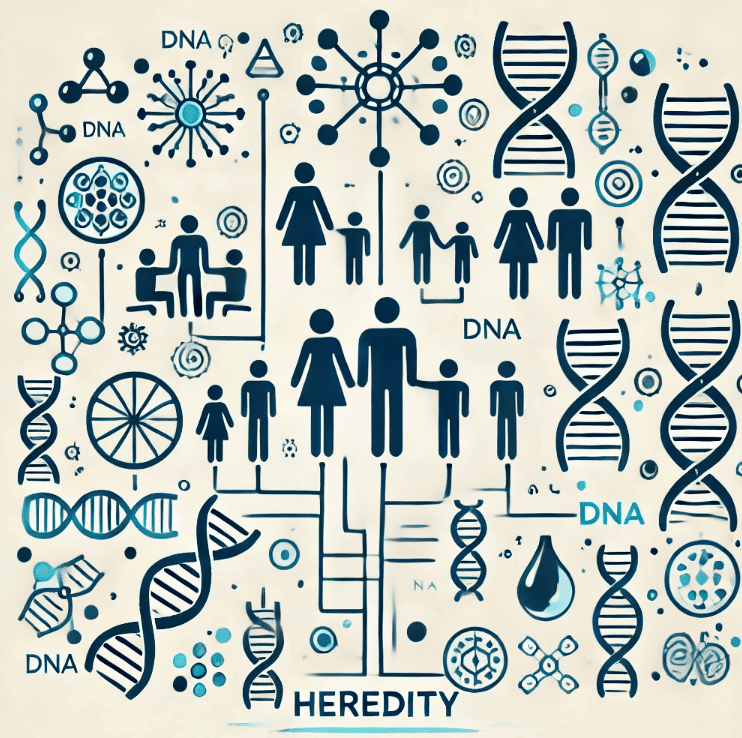
Accumulation of Variation of Reproduction
- If one bacterium divides, and then the resultant two bacteria divide again, the four individual bacteria generated would be very similar. There would be only very minor differences between them.
- However, if sexual reproduction is involved, even greater diversity will be generated.
- In sexual reproduction, the parental generation provides information for basic body design for the next generation, which is accompanied by small changes.
- Different variations would provide different advantages to different individuals.
- The selection of variants by environmental factors forms the basis for the evolutionary process.
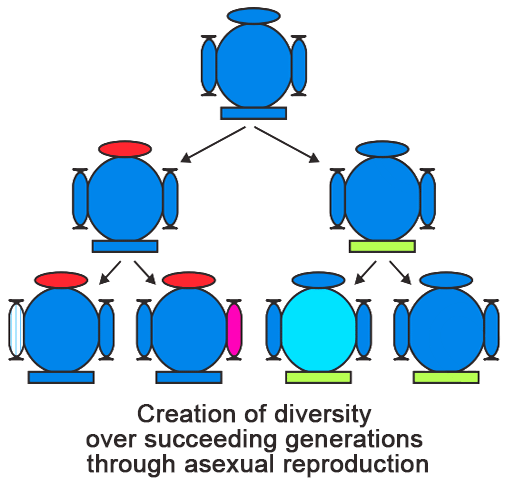
Heredity
The process of passing down characteristics from parents to offspring is known as heredity. Both the father and mother provide nearly equal amounts of genetic material to their child. This means that for every characteristic, a child inherits two versions, shaped by both the father's and mother's DNA.
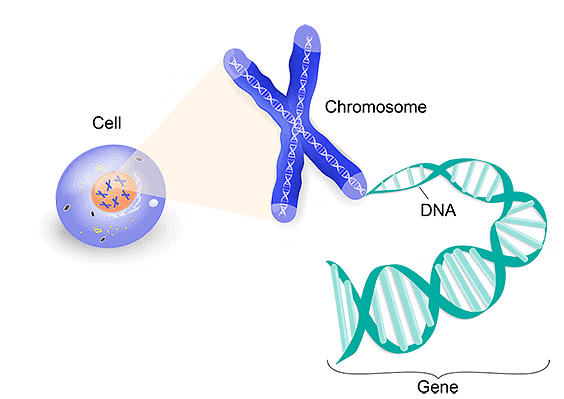
Inherited traits
- The characteristics passed down from parents are called inherited traits. These traits are always transferred to the next generation, but they may not always be visible due to factors like dominance or recessiveness.
- Variations that occur during reproduction can also be inherited.
Genes
- Gene is the functional unit of heredity.
- Every gene controls one or several particular characteristic features in living organisms.
Rules for Inheritance of Traits: Mendel's Contributions
- Gregor Johann Mendel, through his studies on Garden Pea, formulated the laws of inheritance.
- He focused on plants that consistently produced a certain trait and examined contrasting features such as tall versus short plants, round versus wrinkled seeds, and white versus violet flowers.
- In Mendel's experiments, only the tall trait was expressed.
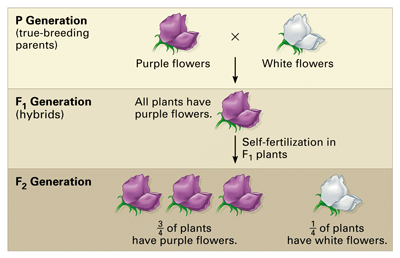
Dominant Gene
The traits that express themselves in an organism in every possible combination and can be seen are called Dominant traits. In Mendel’s experiment, we see that the tall trait in pea plants tends to express more than the short trait. Therefore, the tall trait of the plant is said to be dominant over the short trait.
Recessive Gene
- A trait that does not show itself when a dominant gene is present is called a recessive trait. A recessive trait may be present in an organism but will not be visible if a dominant gene exists.
- The sex of the child is determined by whether the paternal chromosome is X (for girls) or Y (for boys).
Monohybrid Cross
- Mendel conducted experiments by crossing plants with different traits and observed the offspring in the first generation (F1) and second generation (F2), calculating the ratios of plants showing either the original character traits or new ones.
- For instance, he crossed a pure tall pea plant with a dwarf pea plant. In the F1 generation, all the offspring were tall. This led Mendel to suggest that two copies of traits (now called genes) are present in organisms that reproduce sexually.
- This means that just one copy of 'T' is sufficient for a plant to be tall, while a plant needs both copies to be 't' to be short. Traits like 'T' are termed dominant, while those like 't' are recessive.
- When F1 plants were crossed to produce F2 plants, it was found that three-quarters were tall and one-quarter were short. This indicates that both tallness and shortness traits were passed on in the F1 plants, but only tallness was visible.
- Mendel concluded that each offspring inherits one allele from each parent, forming a combination of traits. For example, if we denote tallness as 'T' and dwarfness as 't', the tall parent can be shown as TT and the dwarf as tt. This represents pure plants for their traits, making them homozygous.
- When F1 progeny self-pollinated, the resulting F2 generation displayed a ratio of 3 : 1, meaning three tall and one dwarf pea plant. Mendel combined his knowledge of science and mathematics, being the first to systematically count individuals with particular traits in each generation, leading to his laws of inheritance.
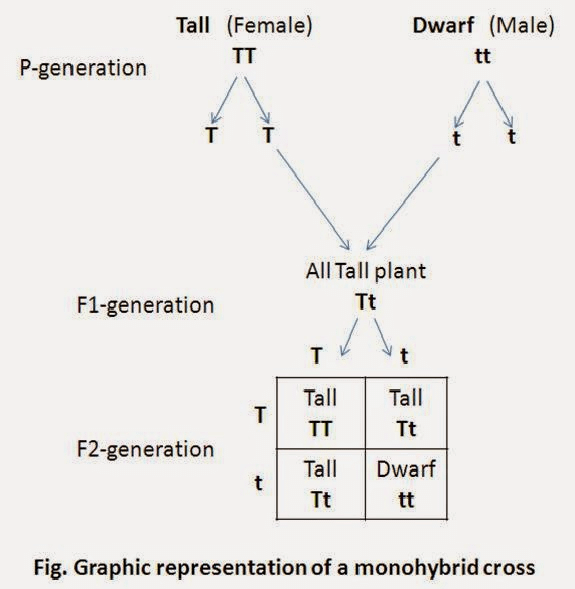
Dihybrid Cross
- A single copy of 'T' is enough to make the plant tall while both copies of T for the plant to be dwarf.
- The trait which is expressed in F1 i.e., in heterozygous condition, is called dominant the one which remains hidden is termed recessive. The F1 generation is the result of cross between two pure individuals for contrasting characters. Hence, it will have one chromosome from either parent (Ex: Tt), making it heterozygous.
- Similarly, when two pairs of contrasting characters were studied simultaneously, it was found that two traits are inherited independent of each other.
- For example, a plant with round seeds of yellow colour (RRYY) was crossed with a plant with wrinkled seeds of green colour (rryy).
- In F1 generation, all plants produced resembled the dominant parent.
- However, on selfing F1 x F1 to get F2 progeny, the result showed that the two traits i.e., round/wrinkled seeds and yellow/green colour were inherited independently.
- It also shows that new combinations of traits are formed in F2.
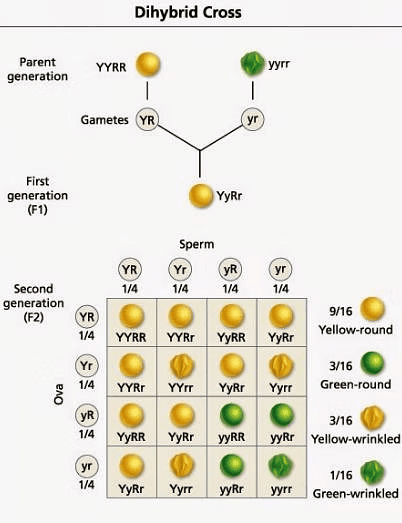 This shows that the two traits are inherited independently of each other.
This shows that the two traits are inherited independently of each other.
Expression of genes
- Genes control the expression of a trait or a character in an organism.
- Genes produces proteins.
- The proteins act as enzymes which can directly control a character or help in the formation of a hormone which can control the expression of a particular character or the proteins become a part of various structural components.
Sex Determination

- Humans have 23 pairs of chromosomes. Among these, 22 pairs are autosomes and one pair is the sex chromosome, which plays a key role in sex determination.
- Males have one X and one Y (XY) sex chromosome.
- Females have two X (XX) sex chromosomes.
- All children inherit an X chromosome from their mother, regardless of whether they are a boy or girl. Therefore, the sex of the child is determined by what they receive from their father. A child who inherits an X chromosome from their father will be a girl, while one who inherits a Y chromosome will be a boy.
- The sex of the child depends on whether the paternal chromosome is X (for girls) or Y (for boys).
- Women possess a perfect pair of sex chromosomes, both being X.
|
80 videos|569 docs|80 tests
|
FAQs on Overview: Heredity - Science Class 10
| 1. What is heredity and why is it important in biology? |  |
| 2. What are inherited traits and how do they differ from acquired traits? |  |
| 3. What are Mendel's contributions to the understanding of inheritance? |  |
| 4. What is a dihybrid cross and what does it demonstrate? |  |
| 5. How is sex determination achieved in humans? |  |

















